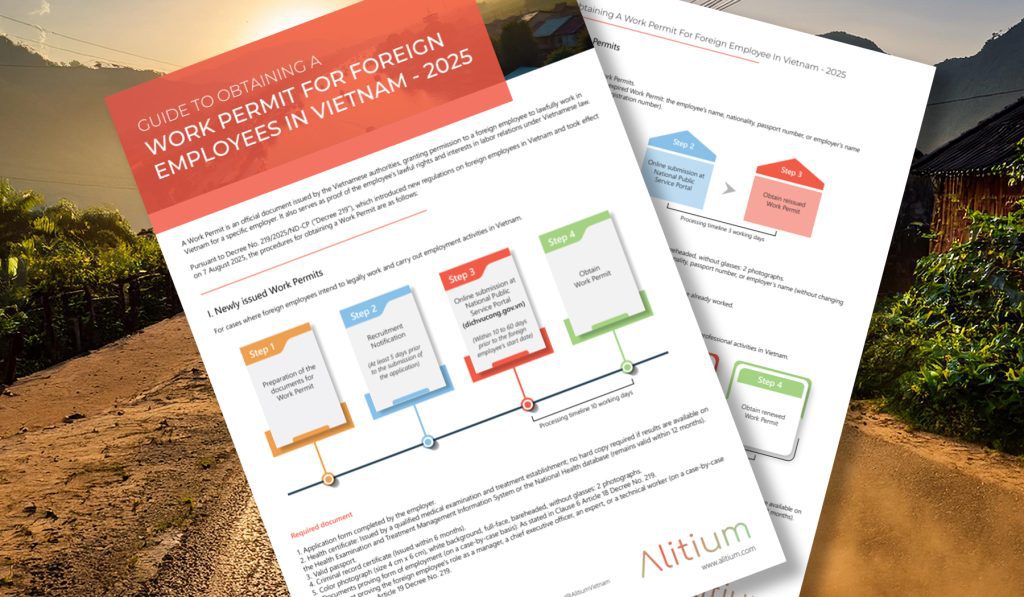Laws and Solutions for Protecting Software Intellectual Property (IP) in Vietnam
In the digital era, software is a key driver of economic growth, from simple mobile apps to complex AI systems. While accessible with just a few clicks, each piece of software embodies significant intellectual and resource investment. In today’s economy, where intangible assets frequently outweigh physical infrastructure in value, protecting software intellectual property (“IP”) is essential. Such protection allows both software enterprises and businesses developing in-house solutions to retain control over their innovations, achieve fair returns on investment, and preserve their competitive edge. The protection of intellectual property rights for software is therefore no longer a matter of legal formality, it is a strategic necessity. Business owners are strongly recommended to register their software IP at the earliest stage, as timely protection not only mitigates legal and commercial risks but also maximizes enterprise value and investor confidence.
This article examines Vietnam’s legal framework for protecting intellectual property rights in software, highlighting the key mechanisms available, including copyright, patents, and trade secrets with evaluation of their advantages and disadvantages. Our analysis ultimately aims to support companies in minimizing legal and commercial risks, safeguarding innovation, and strengthening their competitive position in the digital economy.
Under the Law on Digital Technology 2025, software is defined as a set of instructions, commands, and digital data designed to control devices to perform specific functions. Likewise, clause 1, article 22 of the Law on Intellectual Property 2005, amended by clause 6, article 1 of the Law on Intellectual Property 2022 (“Law on IP”) defines a computer program as a collection of instructions expressed in commands, code, diagrams, or other forms, enabling a device to perform designated tasks and achieve specific results when integrated into compatible equipment. These definitions are essentially equivalent, thereby confirming that software is regarded as a computer program under the Law on IP.
1. Copyright
Copyright is the right of individuals or organizations over works they create or own (clause 2, article 4 of the Law on IP). Protected works must be the result of creative effort and expressed in a specific form. The Law on IP specifies types of works eligible for copyright protection, including computer programs (clause 1, article 14 of the Law on IP).
In general understanding, software, though developed from a common idea, constitutes a distinct work when expressed through different commands, code structures, or data sets. This can be likened to authors conveying the same idea through different wording, styles, or genres, thereby producing unique and independent literary works. Each such work is protected by copyright under the law.
Where the copyright owner contracts the author, the allocation of moral and property rights follows legal provisions. The author, as the creator, retains moral rights such as naming the work, being credited, and protecting its integrity. The copyright owner, however, holds the right to publish the work and all property rights, including the right to rent the original or copies of the program. Accordingly, any rental of the software without the owner’s consent constitutes a legal violation.
Registration is not mandatory for copyright to arise, but obtaining a copyright certificate serves as strong legal evidence in the event of disputes. Copyright protection grants the author or rightful owner the exclusive rights to reproduce, distribute, and modify the software, as well as to license its use. In practice, this mechanism is the most widely applied form of IP protection for software in Vietnam, as it provides a straightforward and effective safeguard against unauthorized copying or commercial exploitation.
2. Patents
Clause 2, article 59 of the Law on IP states that computer programs (or software) are not protected as patents. However, according to the Patent Examination Regulation attached to Decision No. 487/QD-SHTT, if a software-related invention exhibits technical characteristics and, when integrated into a technical solution, produces a technical effect beyond ordinary physical interactions, it may qualify for a patent. For example, the MP3 audio compression algorithm, patented by the Fraunhofer Institute (Germany) in 1989 (U.S. Patent No. 5,579,430 and others), was granted patents in the U.S. and Europe due to its “technical effect” (as defined by the European Patent Office). This algorithm addressed a specific technical problem – efficient audio data compression – rather than being merely an abstract algorithm. While ordinary software code may only qualify for copyright, its technical features enabled patent protection. This often means demonstrating that the software is not merely an abstract algorithm or a business method, but rather contributes to solving a technical problem, for example, controlling a machine, improving data transmission efficiency, or enhancing system security.
Additionally, the software must meet three requirements: novelty, inventiveness, and industrial applicability to be granted patent protection. The examination process is highly stringent, which may last from 18 to 24 months. During the examination, the application must undergo publication to allow for the identification of any claim challenging its novelty.
Securing a patent provides the strongest form of protection, granting the owner exclusive rights to exploit the software and preventing others from making, using, or commercializing it without authorization.
3. Trade Secrets
Under clause 23, article 4 of the Law on IP, a trade secret is information obtained through financial or intellectual investment, undisclosed, and capable of providing a business advantage. Thus, software can be protected as a trade secret, though this is less commonly discussed.
To qualify as a trade secret, the software must meet the following conditions:
(i) It is not common knowledge and not easily obtainable;
(ii) When used in business, it provides a competitive advantage to its holder over those who do not possess or use it;
(iii) It is safeguarded by necessary measures to prevent disclosure or easy access.
Unlike copyright or patent, trade secret protection does not require registration and can last indefinitely, provided secrecy of the protected object is preserved. This mechanism is particularly effective for software solutions that companies prefer not to disclose through formal filings. In practice, businesses safeguard trade secrets by implementing internal security protocols, limiting access to sensitive information, and using non-disclosure agreements (NDAs) and other advanced methods. However, once confidentiality is lost, protection cannot be restored, making diligent management essential. Moreover, enforcement often requires proof that reasonable steps were taken to preserve confidentiality, placing a significant burden on the rights holder.
All the aforementioned pathways aim to protect software’s intellectual property, prevent unauthorized use, and safeguard the owner’s commercial rights. However, they differ significantly, with distinct advantages and disadvantages:
|
|
Copyright |
Patents |
Trade Secrets |
|
Requirement |
Expression of software (source code, code structure, interface) |
Technical solutions involving software that meet novelty, inventive step, and industrial applicability |
Not publicly known, has commercial value, and is subject to reasonable measures to maintain confidentiality |
|
Registration |
Automatic upon creation; registration optional (for evidentiary value), simple process, no requirement to public details |
Strict and lengthy registration process |
No registration, protection depends on confidentiality measures |
|
Duration |
Author’s life + 50 years |
20 years from filing date, non-renewable |
Indefinitely, if secrecy is maintained |
|
Costly |
No |
Yes |
Yes |
|
Scope of protection |
Limited protection (exclude the ideas, algorithms, or functions), prevents independent creation and use |
Full protection (include ideas, forms, functions, …), prevents independent creation and use |
Full protection, cannot prevent independent creation and use |
|
Limitations |
Split of rights between the author/co-author and the right owner |
Public disclosure required, not available for pure software |
Protection lost once secrecy is compromised; requires strict internal controls, challenging to prove in disputes |
|
Best-use case |
General protection of software code |
Software tied to technical innovations |
Core algorithms or business software that companies prefer not to disclose |
In summary, intellectual property rights for software offer diverse protection options, each with its own advantages and disadvantages. Copyright provides low-cost shield for specific expressions of the software; patents offer stronger exclusivity for core ideas and internal data; and trade secret allows non-disclosure but requires strict internal arrangement and policy.
As no method is perfect, effectively protecting IPR requires authors and rights holders to thoroughly assess the software’s characteristics (e.g., source code, technical features, or confidential value) and business plans to select the appropriate protection form or combine multiple methods. Securing IP rights today not only safeguards your innovation but also unlocks growth, investor confidence, and long-term market advantage. The sooner you act, the stronger your position will be.
This article was written by:
Tram Pham – Senior Associate, Alitium
Nhi Nguyen – Legal Assistant, Alitium
For any further questions you may have, please reach out to us at vietnam@alitium.com
********
This article is intended to provide an overview of intellectual property regulations for software. While it aims to present useful insights, it is important to note that the content shared here should not be considered as formal legal or financial advice. For specific guidance on tax obligations or legal matters related to your business, we strongly recommend consulting with a qualified professional, such as a tax advisor or legal expert or directly reach out to us.








